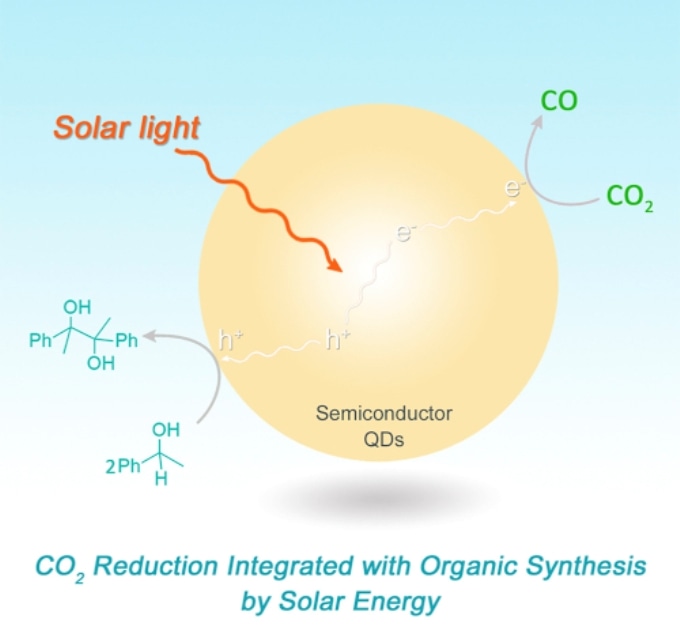Jul 29 2019
A new model that can integrate CO2 photoreduction with oxidative organic synthesis to generate both value-added chemicals and solar fuels at the same time has been designed by scientists from the Technical Institute of Physics and Chemistry (TIPC) of the Chinese Academy of Sciences. The study results have been published in Chem.
 Scheme of QDs-photocatalyzed CO2 reduction and oxidative organic synthesis under solar light. (Image credit: TIPC)
Scheme of QDs-photocatalyzed CO2 reduction and oxidative organic synthesis under solar light. (Image credit: TIPC)
It can be said that green plants, by nature, absorb water and CO2 to generate oxygen and carbohydrate (CO2 + H2O + hv → O2 + [CH2O]), thereby converting solar energy into chemical fuels. In the last few decades, based on this process, great efforts have been made to demonstrate efficient and cost-effective artificial photosystems for CO2 reduction.
Conventional systems, however, are subjected to low activity/selectivity or the cost of sacrificial reagents. For the first time, the scientists have explained a model that uses solar energy to integrate semiconductor quantum dots (QDs)-catalyzed CO2 reduction with organic synthesis.
Conversion of CO2 into CO will continue with exciting activity and selectivity (>96%) once integrated with oxidative C-C coupling of 1-phenylethanol and derivatives to related pinacols with high yields (>98%). The protons and electrons that were released during oxidative half-reaction were used for the reductive half-reaction of CO2 reduction.
Due to its cost-effective nature and very high activity, this method has shown more promising applications in large-scale solar-driven CO2 conversion in the near future.
This study was supported by the Ministry of Science and Technology of China, the National Science Foundation of China, and the Strategic Priority Research Program of the Chinese Academy of Sciences.